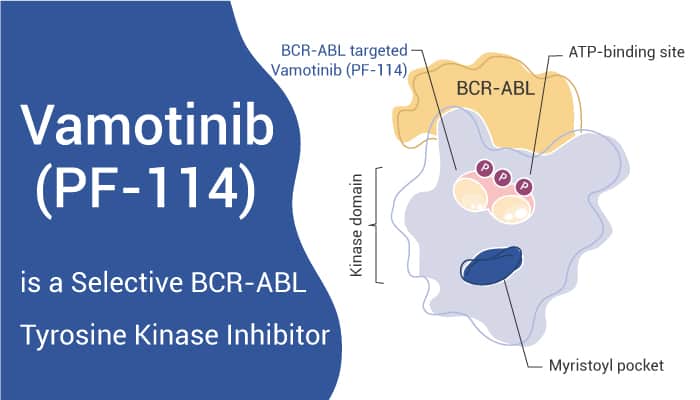BCR-ABL, a fusion gene, is a mutation that is formed by the combination of two genes, BCR and ABL. The BCR gene is normally on chromosome number 22. The ABL gene is normally on chromosome number 9. The BCR-ABL mutation happens when pieces of BCR and ABL genes break off and switch places. The piece of chromosome 9 that breaks off includes part of the ABL gene. When this piece moves over to chromosome 22, part of the ABL gene attaches to the BCR gene. The merged gene is the BCR-ABL fusion gene. The changed chromosome 22, which contains the BCR-ABL gene, is the Philadelphia chromosome. The product of this genetic rearrangement consists in Bcr-Abl fusion protein with deregulated tyrosine kinase activity that leads immune precursors to divide endlessly.
The BCR-ABL gene shows up in patients with certain types of leukemia, a cancer of the bone marrow and white blood cells. BCR-ABL is found in almost all patients with a type of leukemia called chronic myeloid leukemia (CML). The BCR-ABL gene also exists in some patients with a form of acute lymphoblastic leukemia (ALL) and rarely in patients with acute myelogenous leukemia (AML). Thus, Bcr-Abl tyrosine-kinase inhibitors (TKI) are the first-line therapy for most patients with chronic myelogenous leukemia (CML).
Vamotinib (PF‑114) is a potent and selective inhibitor of BCR‑ABL tyrosine kinase.

Vamotinib, a derivative of Ponatinib, demonstrates a high inhibitory activity against wild-type and mutant BCR‑ABL forms, such as the clinically important T315I. Furthermore, Vamotinib can induce apoptosis in chronic myelogenous leukemia cells. Meanwhile, Vamotinib exhibits preferential kinase selectivity, safety, notable pharmacokinetic properties and therapeutic efficacy in a murine model. Nevertheless, activation of STAT3 phosphorylation in response to Vamotinib may permit cell rescue; thus, a combination of BCR‑ABL and STAT3 inhibitors should be considered for improved therapeutic outcomes.
All in all, Vamotinib is a potent and selective inhibitor of BCR‑ABL tyrosine kinase that can induce apoptosis in chronic myelogenous leukemia cells.
Reference:
[1]. Rossari F, et, al. J Hematol Oncol. 2018 Jun 20;11(1):84.
[2].Ivanova ES, et, al. Int J Oncol. 2019 Jul;55(1):289-297.